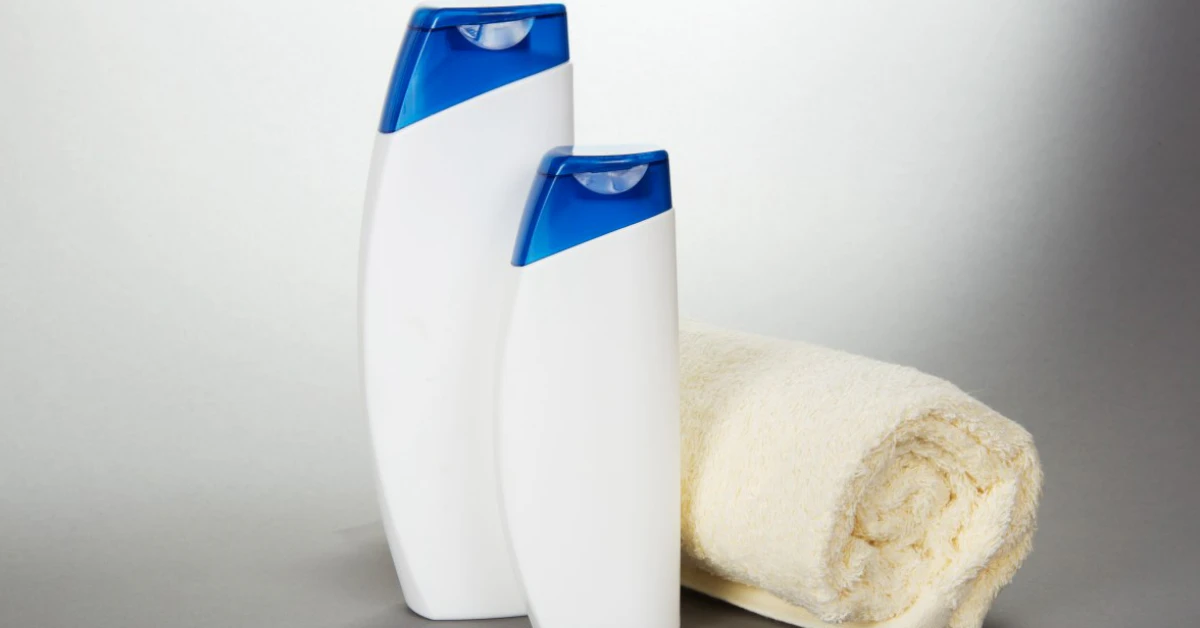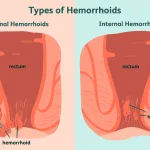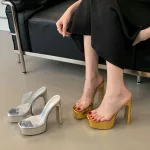Ever get that weird, stubborn breakout right along your hairline? Or maybe you’ve noticed little bumps on your back or chest that just won’t quit, no matter how many fancy face washes you try? Yeah, I’ve been there too. It’s like your skin is trying to send you a secret message, but it’s all in code. And sometimes, the culprit isn’t your skincare routine at all—it’s your hair care. Wild, right?
Let’s get real for a second. The best non comedogenic shampoo and conditioner can be a total game-changer if you’re dealing with acne-prone skin. I’m not just talking about a little extra shine or volume. I mean products that actually help you get clear and stay clear—without making your skin freak out. So, if you’re tired of playing whack-a-mole with breakouts, or you just want to know what’s safe to use, you’re in the right place. Let’s dive in, friend-to-friend, and figure this out together.
What Does “Non Comedogenic” Even Mean for Hair Care?
Okay, let’s break down the jargon. “Non comedogenic” is just a fancy way of saying “won’t clog your pores.” You’ve probably seen it on face creams and makeup, but it matters for your shampoo and conditioner too. Why? Because when you rinse your hair, all those suds and conditioners can run down your face, neck, back, and chest. If they’re loaded with pore-clogging ingredients, guess what? Your skin pays the price.
Ever wonder why you get breakouts in weird places—like right where your hair touches your skin? That’s not a coincidence. It’s your body waving a little red flag, saying, “Hey, something’s not right here!”
How Do Shampoos and Conditioners Cause Breakouts?
It’s not just about what you put on your face. Hair products can sneak into your pores, especially if you’re sweating, working out, or just living your life. The worst offenders? Heavy oils, silicones, and certain waxes that love to hang out on your skin long after you’ve rinsed them out. They’re like that one guest at a party who just won’t leave.
What Ingredients Should You Avoid If You’re Acne-Prone?
Here’s where things get a little science-y, but stick with me. If you see ingredients like coconut oil, isopropyl myristate, or certain silicones (like dimethicone) high up on the label, you might want to steer clear. These can be super nourishing for hair, but not so great for skin that’s prone to breakouts.
Common Pore-Clogging Ingredients in Hair Products
- Coconut oil
- Shea butter
- Lanolin
- Isopropyl myristate
- Heavy silicones (dimethicone, cyclopentasiloxane)
Real-World Stories: When Hair Care Triggered Breakouts
I’ll never forget the time I switched to a “moisturizing” shampoo because my hair was feeling dry. Within a week, my forehead looked like a pepperoni pizza. Turns out, the shampoo was loaded with coconut oil. Lesson learned: what’s good for your hair isn’t always good for your skin. If you’ve got a story like this, you’re definitely not alone.
Why Choose the Best Non Comedogenic Shampoo and Conditioner?
So, why bother with all this? Because the right products can make a world of difference—not just for your hair, but for your skin, your confidence, and honestly, your sanity. The best non comedogenic shampoo and conditioner won’t just keep your pores clear; they’ll help you feel good in your own skin, every single day.
Benefits for Acne-Prone Skin and Sensitive Scalps
Imagine washing your hair and not worrying about breakouts popping up the next day. That’s the dream, right? Non comedogenic formulas are designed to rinse clean, leave no heavy residue, and keep your scalp and skin happy. Plus, they’re often gentler, so if you’ve got a sensitive scalp, you’re in luck.
Risks of Using the Wrong Products
On the flip side, using the wrong shampoo or conditioner can set off a chain reaction—clogged pores, irritation, and a whole lot of frustration. It’s like trying to put out a fire with gasoline. Not fun.
Balancing Scalp Health and Skin Clarity
Here’s the tricky part: you want something that cleans your hair without stripping it, but also doesn’t leave behind a film that can clog your pores. It’s a balancing act, but totally doable with the right info.
Expert Tips for Choosing Safe Products
Look for labels that say “non comedogenic,” “oil-free,” or “won’t clog pores.” And don’t be afraid to patch test a new product—just dab a little on your jawline or neck and see how your skin reacts over a few days. Your future self will thank you.
Top Picks: Best Non Comedogenic Shampoo and Conditioner
Alright, let’s get to the good stuff. Here are some tried-and-true favorites that won’t mess with your skin. I’ve included options for different hair types, because we’re all a little different, right?
| Product | Key Features | Price Range | Where to Buy |
|---|---|---|---|
| ABBA Gentle Shampoo | Sulfate-free, plant-based, non comedogenic | $$ | Salons, online |
| Formula 18 Naked Moisturizing Shampoo | Hydrating, no pore-cloggers, color-safe | $$$ | Online, select retailers |
| Herbal Essences Bio:Renew Sheer Moisture Conditioner | Lightweight, silicone-free, gentle | $ | Drugstores, online |
| Giovanni Tea Tree Triple Threat Conditioner | Clarifying, invigorating, non comedogenic | $$ | Natural stores, online |
| Pureology Hydrate Sheer Shampoo | For dry, color-treated hair, non comedogenic | $$$ | Salons, online |
Best Options for Tweens and Teens
Let’s be honest—tweens and teens have enough to deal with. Hormones, school, social stuff… the last thing they need is a breakout from their shampoo. The best shampoo for tweens is gentle, fragrance-light, and free from heavy oils or waxes. Look for simple, clean formulas that won’t weigh hair down or clog pores. Herbal Essences, ABBA, and Giovanni all have great options that fit the bill.
Why Tweens Need Gentle, Acne-Safe Formulas
Young skin is extra sensitive, and breakouts can really mess with confidence. Starting with the right products early can make a huge difference—not just for skin, but for self-esteem too.
Dry Shampoo and Acne: What You Need to Know
Let’s talk about the unsung hero of busy mornings: dry shampoo. But here’s the thing—some dry shampoos can be sneaky little pore-cloggers. If you’re using the best dry shampoo, you want it to soak up oil, not cause breakouts.
Is Powder Dry Shampoo Better Than Spray for Acne-Prone Skin?
Great question! Powder dry shampoo is often less likely to clog pores than spray versions, which sometimes use heavy propellants or oils. If you’re wondering, “is powder dry shampoo better than spray?”—for acne-prone folks, the answer is usually yes. It’s lighter, easier to control, and less likely to leave a film on your skin.
Dry Shampoo Powder vs. Spray: Pros, Cons, and Skin Impact
| Type | Pros | Cons | Skin Impact |
|---|---|---|---|
| Powder | Lightweight, easy to target, less residue | Can be messy, takes practice | Less likely to clog pores |
| Spray | Quick, convenient, even coverage | May contain oils/propellants, can build up | Higher risk for breakouts |
Best Dry Shampoo Powder for Dark Hair
If you’ve got dark hair, you know the struggle—most dry shampoo powders leave a ghostly white cast. Look for tinted formulas or those labeled “invisible.” The dry shampoo amika and batiste dry shampoo both have options for brunettes that blend right in. No more ashy roots!
How to Use Dry Shampoo Powder Without Causing Breakouts
Here’s a little trick: apply dry shampoo powder directly to your roots, then use a clean brush to distribute it. Try to avoid getting it on your skin, especially your forehead and hairline. And always wash it out thoroughly at your next shampoo—don’t let it build up.
Can You Use Baby Powder as Dry Shampoo?
Old-school hack, right? While you can use baby powder as dry shampoo in a pinch, it’s not always the best for acne-prone skin. Some baby powders contain talc or fragrance, which can irritate or clog pores. If you’re desperate, use a tiny amount and keep it away from your face. But honestly, the best dry shampoo powder is made for hair, not babies.
Safety, Effectiveness, and Skin Risks
Stick with products designed for your hair and skin type. If you’re curious about alternatives, always check the ingredient list and do a patch test first. Your skin will thank you.
Real-World Experience: What Works and What Doesn’t
Let’s get personal for a second. I used to think all shampoos were basically the same—until I started paying attention to what was actually in them. After switching to a non comedogenic shampoo and conditioner, my breakouts along my hairline and back started to clear up. It wasn’t overnight, but it was real. And I’ve heard the same from so many friends and readers. Sometimes, it’s the little changes that make the biggest difference.
Personal Stories and Case Studies
One friend of mine, let’s call her Jess, struggled with “mystery” breakouts for years. She tried every acne treatment under the sun, but nothing worked—until she swapped her heavy, coconut oil-packed conditioner for a lightweight, non comedogenic one. Within weeks, her skin calmed down. It’s not magic, just science (and a little patience).
Expert Insights: Dermatologist and Stylist Recommendations
Dermatologists agree: if you’re prone to breakouts, your hair care matters. Many recommend looking for products labeled “non comedogenic” and avoiding anything with heavy oils or waxes. Stylists, on the other hand, know that healthy hair starts with a healthy scalp. The best non comedogenic shampoo and conditioner will keep both your hair and skin in balance.
How to Build an Acne-Safe Hair Care Routine
Ready to make the switch? Here’s how to do it without losing your mind (or your good hair days).
Step-by-Step Guide to Switching Products
- Start by swapping out one product at a time—maybe your shampoo first, then your conditioner.
- Give your skin a few weeks to adjust. Breakouts might get worse before they get better (it’s normal, promise).
- Keep track of what you’re using and how your skin reacts. A simple note on your phone works wonders.
Transition Tips: What to Expect and How to Troubleshoot
If you notice more oil or dryness at first, don’t panic. Your scalp and skin need time to rebalance. Stick with it, and resist the urge to try a million new products at once. Less is more.
How to Read Labels and Spot Hidden Pore-Cloggers
Ingredient lists can be intimidating, but you don’t need a chemistry degree. Look for short, simple ingredient lists, and avoid anything with “oil,” “butter,” or “wax” high up. If you’re not sure, a quick search or a chat with your dermatologist can help.
Printable Checklist for Shopping
- Non comedogenic or oil-free label
- No coconut oil, shea butter, or lanolin
- Lightweight, rinse-clean formulas
- Fragrance-free or low fragrance (if sensitive)
Conclusion
So, there you have it—the lowdown on the best non comedogenic shampoo and conditioner, and why it matters way more than you might think. It’s not just about clear skin (though that’s a huge win). It’s about feeling comfortable, confident, and in control of your own routine. Remember, everyone’s skin is different, and what works for one person might not work for another. But with a little patience and the right info, you can find what works for you.
If you’ve got questions, want to share your own story, or just need a little encouragement, drop a comment below. We’re all in this together. Here’s to happy hair, clear skin, and feeling good—inside and out.


















Leave a Reply
You must be logged in to post a comment.